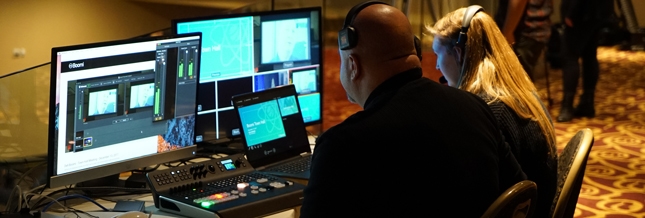If your company conducts town hall meetings, a live webcast is an excellent way to extend their reach to employees who might not otherwise be able to attend.
Here are some key things we consider for every town hall live webcast.
- Venue. Do a site visit and speed test well in advance of the event. Make sure a dedicated, minimum 10Mbps internet connection is available. Determine camera positions, switcher location and cabling runs.
- AV. Venues typically have an in-house AV group that handles audio, lighting, projection screens, etc. Coordinate with them to make sure there are no surprises.
- Graphics. Prepare title screens, lower third IDs and PowerPoint slides.
- Question Submission. Establish a mechanism for viewers to submit questions via Twitter feed, chat, email, etc.
- Platform. Determine how the webcast will be deployed, e.g. a dedicated web page, Facebook, YouTube, etc. Will the webcast be public or private?
- Q&A. Will there be a Q&A session? If so, provide a wireless handheld microphone and audience-facing camera. Have a runner.
- Setup. If possible, set up the day before. Run a tech test and do a show run-through.
- Archive. Record an archive of the switched program, for on-demand playback after the event.
Depending on the specifics of your particular town hall meeting, there may be other things to consider. But this list will go a long way toward ensuring a successful live webcast.
Allied Pixel provides full-service live webcasting services. Feel free to contact me if you’d like to discuss a live webcast for your next town hall meeting.

